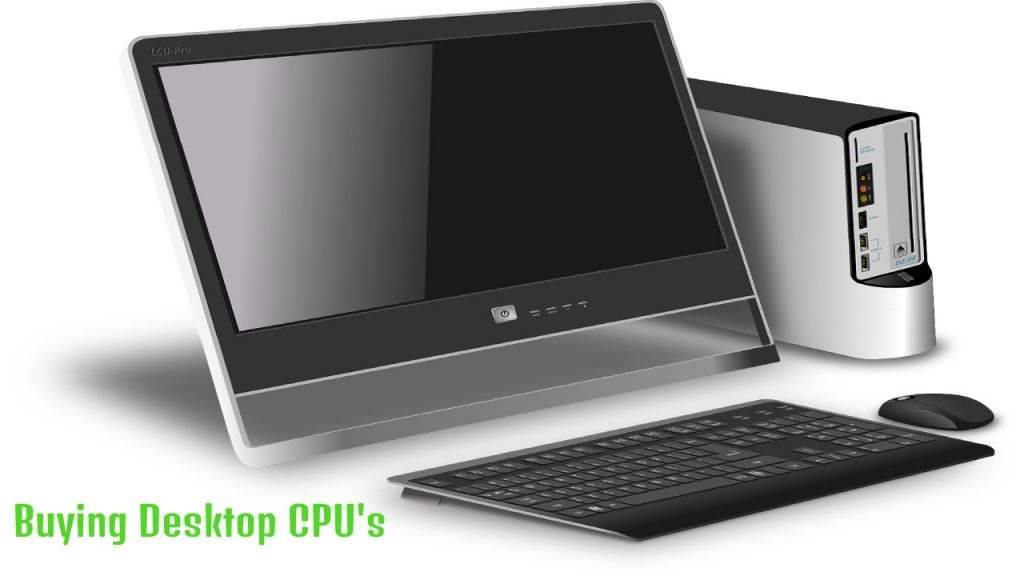The central processor, or CPU, is the heart of any desktop, whether it is a PC for the office or a super-fast gaming system. Depending on your desktop usage, deciding the right CPU configuration can help you achieve the desired performance.
With plenty of affordable options available on the market, buying the right CPU can be overwhelming. You need to know terminologies like cores, clock, and threads that are typically in numbers. To make sense of these specifications, you need a little skill.

Once you gain the aptitude, you can further seek the CPU Agent’s assistance to determine the right CPU configuration for your desktop. .
Table of Contents
Here is a comprehensive list of specifications you need to focus on while buying a desktop CPU.
Cores
The core is responsible for carrying out the user-initiated instructions.
Most of you have PCs to perform multitasks. Multi-core processing is what you need to experience the desired level of performance. Ideally, you should look for CPUs with 4 to 6 cores. With these many cores, your system can keep up with the consistent software updates of your installed programs and the OS.
Generation and Series
Currently, you have Intel and AMD, the two tech giants, manufacturing desktop CPUs. Each follows a series brand name, with Intel having a series name “Core” and AMD, “Ryzen.” Each series has different levels of power, with prices increasing with the power values.
Each manufacturer releases successive revisions, also known as a generation. The revised versions include product updates, like enhanced micro-architecture, fundamentally changing a CPU’s socket type.
CPU sockets on the motherboard are where the processor lives. Intel and AMD come with their socket types.
Every generation offers CPU series with varying numbers of cores and clock speeds of these cores. You can choose the processor generation offering a power level that meets your requirements.
Integrated Graphics
Desktop CPUs come with integrated graphics, allowing you to display the video on your desktops. However, you cannot expect the same resolution and quality as a dedicated graphics card.
With lower resolution and lower graphical settings, you may reach an average of 30fps performance. Besides, if you wish to watch videos and need to see the running MS Office applications, a CPU with integrated graphics is sufficient. Discuss your application demands with a CPU Agent to determine this factor.
Threads
The latest CPUs boast cores that go beyond the number of physical cores. These modern CPUs have multithreading functions, to split an execution command into multiple subsets. Some of the multi-core processors come with 16 cores and 32 threads.
Intel calls the multithreading feature as Hyper-Threading Technology that increases the processing efficiency.
Clock Cycles and Operating Frequency
When you start a program, the CPU will begin pulsing every bit of data, with the physical pulsing measured in hertz, i.e., one cycle.
Your processor’s operating frequency gives the number of cycles per second, executed in a clock cycle. The latest CPUs process the bits at gigahertz speeds.
Intel and AMD are aiming to improve their processor architecture, especially the instructions per cycle (IPC) needed to complete a process. The primary focus is to have fewer cycles to complete a task. You can now find some of the latest generations with lower operating frequency.
Boosting and Overclocking
Boosting, or dynamic overclocking, and overclocking are ways to upgrade your desktop-CPU base operating speeds. When you work with a high-speed program, the CPU with built-in dynamic overclocking scales up its clock speed.
Intel calls in Turbo Boost, while AMD brands it as Turbo Core.
Ensuring that your desktop CPU does not overheat is vital, else your PC will act sluggish. Decide the purpose of your desktop and seek the assistance of a consultant, to compare the different CPU configurations, now trending in the market.


